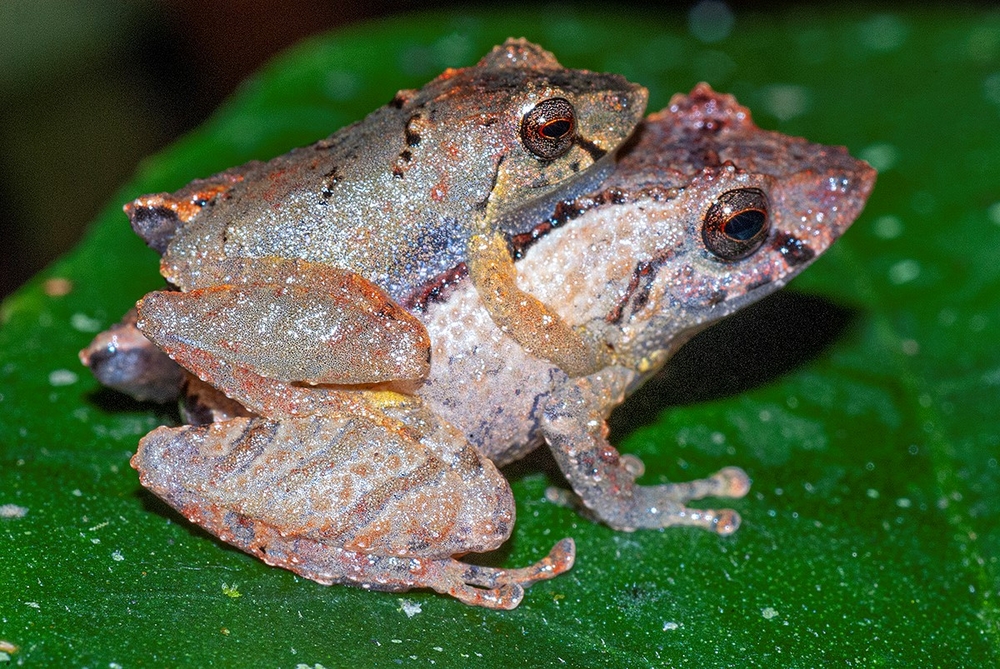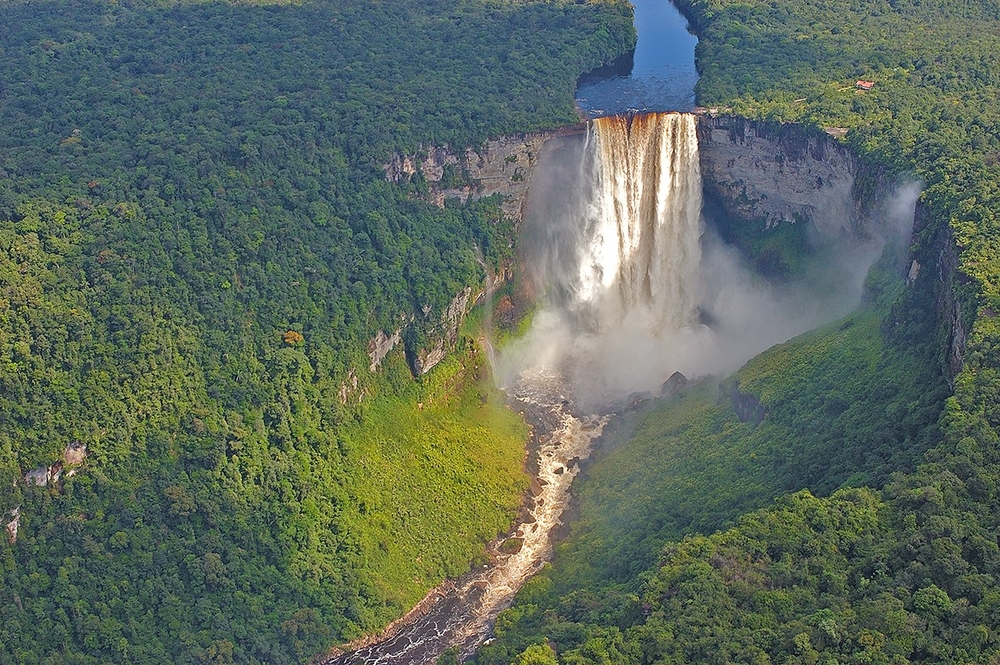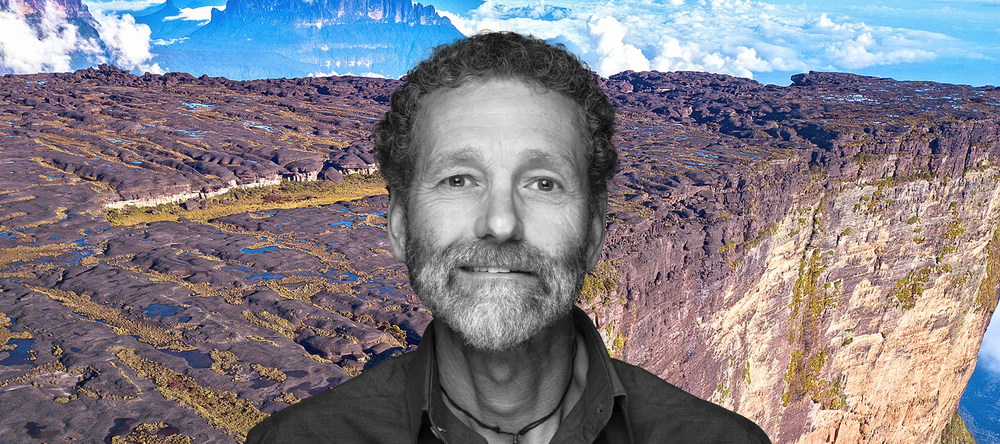 Photo: D. Bruce Means
Photo: D. Bruce Means
Pristimantis koki is a tiny frog (less than 2 cm long), possibly toxic and currently only known from the Wokomung Massif, a large tepui (table-top mountain) in the Pakaraima Mountains of Guyana, South America.
Read the article about the discovery.
This is the second animal species that has been described in honour of Philippe Kok. Indeed, P. Kok discovered a new species of snail during an expedition to the summit of Angasima-tepui in Venezuela in 2011, which was later described as Plekocheilus philippei by a Dutch biologist.
Read the article about the new snail species discovery.
The Pakaraima Mountains – one of the most inaccessible regions of the world
The Pakaraima Mountains are a mountain range lying in southwestern Guyana, and in northern Brazil and eastern Venezuela.
Mount Roraima (also called Roraima-tepui), a large tepui surrounded by cliffs up to 300 metres high, is its highest peak, culminating at 2,810 metres above sea level. The Pakaraima Mountains serve as a natural boundary in the east – west direction, where they extend 800 kilometres to form a border marker between Brazil and south-eastern Venezuela and between Brazil and west central Guyana.
 Sunrise over the Pakaraima Mountains as viewed from the summit of Roraima-tepui. Photo: Philippe J. R. Kok
Sunrise over the Pakaraima Mountains as viewed from the summit of Roraima-tepui. Photo: Philippe J. R. Kok
The Pakaraima Mountains are remnants of a huge mass of Precambrian cemented sandstone that was uplifted with mild deformation when South America detached from Africa several million years ago. Erosion of that gigantic block of sandstone has resulted in dramatic escarpments, the individual remnants of which are called tepuis (table-top mountains). Mount Roraima, Mount Ayanganna and Mount Wokomung are some of the best-known examples in Guyana.
Numerous rivers originate in the area and on their way down they plunge spectacularly to form some picturesque waterfalls, with Kaieteur Falls (in Guyana) as a magnificent example.
 Kaieteur Falls in Guyana. Photo: Philippe J. R. Kok
Kaieteur Falls in Guyana. Photo: Philippe J. R. Kok
The Pakaraima Mountains are mostly forested, with occasional patches of savannas, especially at the base of Roraima and on the Brazilian side of the range. These landscapes are prone to fires.
Difficulties in reaching the steep tepui slopes and the intervening uplands and highlands have made collection of data on animals and plants living there a challenge. This mostly pristine region is renowned for high endemism and biodiversity and new species of vertebrates are still discovered in the region.
More information about Dr Philippe Kok’s work

Dr Philippe J. R. Kok is a Belgian environmental and evolutionary biologist who has been working at the University of Lodz since December 2020. He specialises in the herpetofauna of South American tepuis – one of the most mysterious and inaccessible ecosystems in the world. He has described 50 new taxa of amphibians and reptiles (from species and genera to families) from South America. In his research, he has indicated that uncontrolled tourism and the associated human presence is threatening amphibian populations in one of the planet's last untouched corners.
Read the article written as part of the Science Inspires series about the scientist and his work.
Source: Dr Philippe Kok (Faculty of Biology and Environmental protection, University of Lodz)
Edit: Michał Gruda (Communications and PR Centre, University of Lodz)
The mission of the University of Lodz is to conduct reliable research and actively disseminate facts and research results so as to wisely educate future generations, be useful to society and courageously respond to the challenges of the modern world. Scientific excellence is always our best compass. Our values include: courage, curiosity, commitment, cooperation and respect.
